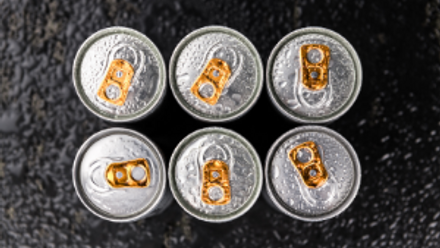Annabel van Griethuysen shares her experiences of caring for a child with cow’s milk protein allergy.
There are many things one needs to negotiate as a new parent. You are inundated with advice, information, appointments and check-ups. You are expected to learn with no prior experience how to care for a newborn, all while being hormonal, sleep deprived and recovering from a major medical event. It is a baptism of fire to say the least!
I thought I was as prepared as possible for the arrival of my first baby in May 2023. However, life has a way of surprising you, and I was blessed with a baby with colic who never slept, wouldn’t latch to breastfeed and appeared to have constant reflux. Little did we know, however, that there was a significant underlying cause: cow’s milk protein allergy (CMPA).
CMPA is an allergy to the proteins found within milk. It differs from lactose intolerance, which is an inability to digest lactose, the sugar in the milk, often due to a lack of, or poor functioning of, lactase.7 The proteins which cause CMPA are most often casein and whey and involve the immune system negatively responding when exposed to them. It is one of the most common childhood food allergies, and Allergy UK reports that it affects around 7% of babies under the age of one, whereas research suggests between 5% and 15% of infants may show symptoms.
CMPA can either be IgE or non-IgE mediated. An IgE-mediated reaction involves the body’s immune system releasing an antibody called immunoglobulin E when exposed to the allergen. It develops through the following process:
- Sensitisation – the first exposure to the allergen, such as milk protein. This prompts the immune system to produce IgE antibodies, which are designed to bind to that specific allergen
- Re-exposure – the subsequent exposure. The IgE antibodies bind to the allergen and trigger the production and release of inflammation chemicals. These are produced from our other immune system cells, such as mast cells or basophils
- Allergic reaction – the inflammatory chemicals produce a range of potential symptoms, including rashes, hives, nausea, coughing, difficulty breathing and anaphylaxis in severe cases.
In the case of IgE-mediated reactions, the symptoms occur quickly, sometimes within minutes. Non-IgE reactions tend to take longer to produce symptoms and are more likely to produce gastrointestinal symptoms, from two to 72 hours after exposure.1
Symptoms of CMPA
The difficulty with CMPA is that some of the symptoms can be attributed to a number of causes and can be quite non-descript. Common symptoms include skin reactions, GI issues, feeding issues, sneezing, runny nose, coughing and wheezing, as well as general discomfort and fussiness. A lot of these symptoms may be attributed to other issues.
In my own experience, my son’s difficulty feeding was due to him having a tongue tie and ‘just not quite grasping how to breastfeed’. His fussiness was put down to his personality and that ‘babies cry and that’s okay’. The difficulty sleeping was put down to ‘that’s just how babies are, and you should think about sleep training’ rather than any pain through reflux and CMPA. The vomiting was due to him eating too fast with a bottle.
It is easy to see how CMPA can be missed when looking at any of these symptoms in isolation. However, together they can paint a clear picture. The first step in identifying CMPA is taking a holistic approach to assessment, looking at all the difficulties reported – even if they may seem discrete, there is a chance they are linked and can be explained with a single diagnosis.1
The risk of an infant developing a CMPA is increased if one or both parents or siblings also has an allergy. A higher risk is also seen if a child is cow’s milk formula fed when compared with exclusively breastfed infants during the first four to six months of life.
Diagnosing a CMPA
If an IgE-mediated allergy is suspected, this is usually diagnosed through a skin prick test. A wheel size of >5mm (or >2mm in very young infants) is a strong predictor of CMPA.7
For non-IgE suspected allergy, in the exclusively breastfed infant, if a mild allergy is suspected, the advice is to continue breastfeeding while the mother is then advised to eliminate cow’s milk from the diet for two to four weeks. It may also be advised not to consume eggs. In the case of a severe suspected allergy, a referral to a paediatric specialist should be facilitated. A calcium supplement should also be advised. In formula-fed infants, elimination diets including provision of an amino acid, or hydrolysed formula, is advised.2 It may take some time to identify a well-tolerated formula initially, as different feeds have differing levels of hydrolysation.
Upon the advice of our GP, I eliminated cow’s milk from my diet and, after a week or two, noticed improvements in my son’s feeding, reflux and vomiting. If I introduced any dairy to my diet, we were back to square one. So that was it, cheese and milk were off the table until we’d weaned my son onto an extensively hydrolysed formula and started weaning onto solids.
I would best describe myself during those months as a meat-eating vegan, often confusing restaurants and cafés by ordering vegan dishes which I was sure had no dairy, and adding some meat on top. I developed a love for oat milk, which continues to this day. I imagine it is much easier now to be milk-free with the increasing popularity and awareness of veganism and allergies. However, the number of (very well-meaning) people who were confused or concerned that I was eating eggs became a near-daily frustration; apparently, eggs are often confused as a dairy product.
The Milk Ladder and weaning process
The weaning process is at the best of times a challenging, stressful and messy part of parenthood! We chose a predominantly baby-led approach to weaning, but managing the reintroduction of dairy, while trying to provide a wide range of new flavours, textures and nutrients, was a challenge.
Unlike a lot of allergies, where the total and lifelong avoidance of the food item is advised, in CMPA, it is advised to attempt reintroduction of cow’s milk back into the diet as infants and children can grow out of their allergy. We were advised to follow the Milk Ladder – a six-step approach to gradually reintroduce dairy into the diet of infants with non-IgE-mediated CMPA. Typically, this process starts at around nine to 12 months of age. The process builds up the allergenic potential of foods, starting with the lowest risk items and gradually increasing to higher-risk items and then pure milk itself. Products with baked milk have the lowest risk as the cooking of milk alters the protein structure, leading to lower risk of an allergic reaction.7 The six-step process we used was developed by iMap and consists of:
- Cookie/biscuit – one initially and build up to three
- Muffin – half and then build up to one
- Pancake – half and then build up to one
- Cheese – around 15g of hard cheese such as parmesan or cheddar. This can be baked once tolerated
- Yoghurt* – 125ml
- Pasteurised milk or infant formula – starting with 100ml mixed with the current milk replacement, building up to 200ml and then, once tolerated, completely swap3
*Once yoghurt, butter, fromage frais etc, is accepted, soft cheeses can also be added.
During this process, we chose to continue to use our son’s allergy-appropriate formula milk, but also started to introduce oat milk as an alternative. Generally, unsweetened fortified plant milks such as soya and oat milk are appropriate and recommended by the NHS. Soya milk is the most similar in protein content to cow’s milk so most often recommended.4
What does the ladder look like in reality?
By building up the volume of the food in each step, this turned into an extremely long process. Each step took a minimum of two to three weeks as we nervously gave tiny amounts of dairy, hovering over the baby on the lookout for any signs of a rash, any discomfort. The other challenge we found was learning how to adapt recipes, and particularly snacks, to a dairy-free weaning process. While our NCT friends were offering cheese sticks, crackers and bread and butter, we were having to source the dairy-free alternatives, which were rarely well accepted, more than double the price and harder to source.
The other challenge was adapting recipes using oat milk or dairy-free butter, for example. Often these products don’t cook in the same way as dairy products. Adapting recipes can be challenging and requires a lot of effort, thinking and skill which, as an exhausted new mum, was hard to manage.
The long-term impact
The good news is, the majority of children will grow out of CMPA as they get older, and research has not indicated any long-term impacts on growth or development in infants following a milk exclusion diet and using an appropriate allergy formula.5
Generally, most children grow out of their CMPA by the age of five, and half by the age of one. The British Society for Allergy and Clinical Immunology indicated that by the age children start school, there was an 80%–90% chance of the child growing out of their allergy. With an IgE-mediated allergy, the chances of growing out of the allergy were affected by the size of the wheel on a skin prick test, with the larger the wheel, the more likely it was that the allergy would persist longer.6 Also, if multiple allergies are present or asthma/allergic rhinitis is also present, it is more likely that the allergy will last longer.7
In our story, by around 15 months of age, we were able to provide normal cow’s milk and we were confident that our son had grown out of his allergy. We had a few stumbles along the way, mostly when introducing yoghurt and then cow’s milk, but the reactions were always less severe on each reintroduction. Now, our son’s favourite foods are yoghurt, grated cheese and (dare I say it) Mini Cheddars (perfect for a long car journey!). I feel as if our family has been on a long journey, and while on reflection I look back with sadness that those early months were filled with doctor’s visits, pain and stress, we have come through it together.
I must admit as a health professional, going through the process of having a child with an allergy has added a new dimension and understanding to the emotional impact of managing this that I did not have before. I am someone who loves a list, loves a plan, and a six-step gradual reintroduction would have seemingly been right in my wheel house, but when it comes to your child, you cannot help but doubt and worry if you are following the plan properly. I also felt like I was having to manage this as a family with little support, as each meal, snack and drink was another step on the intervention plan that we had to manage and monitor. I now have a much better, and more empathetic, understanding of the emotional toll of managing an allergy.
Dietitians are in a great position to help support and manage the emotional aspect of eating and feeding – something I have now been able to see from the point of view of the parent – and our team made the process as successful and achievable as possible.
References
- https://www.allergyuk.org/about-allergy/allergy-in-childhood/cows-milk-allergy/
- Vandenplas et al (2007) Guidelines for the diagnosis and management of cow’s milk protein allergy in infants. Arch Dis Child. 92 (10): 902-908
- iMap Milk Ladder – gpifn.org.uk/wp-content/uploads/2019/10/imap_final_ladder-may_2017_original.pdf
- Dairy and alternatives in your diet (NHS) – nhs.uk/live-well/eat-well/food-types/milk-and-dairy-nutrition/
- Vandenplas et al (2021) Growth in Infants with Cow’s Milk Protein Allergy Fed an Amino Acid-Based Formular. Pediatr Gastroenterol Hepatol Nutr. 5:24(4): 392-402
- https://www.nutricia.co.uk/hcp/where-we-specialise/cows-milk-allergy/cows-milk-allergy-outgrow.html
- Luyt et al (2014) BSACI guideline for the diagnosis and management of cow’s milk allergy. Clinical and Experimental Allergy 44: 642-672







